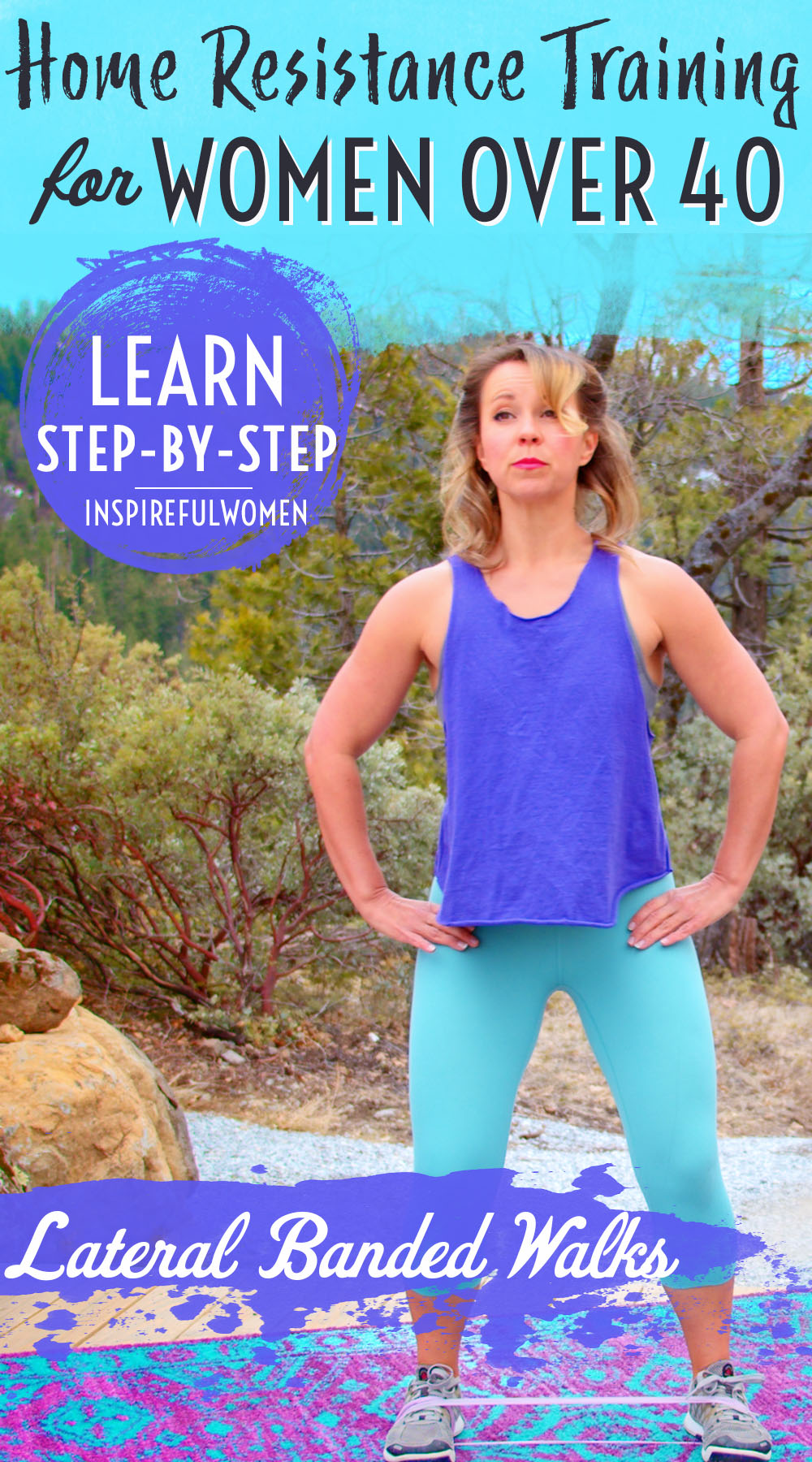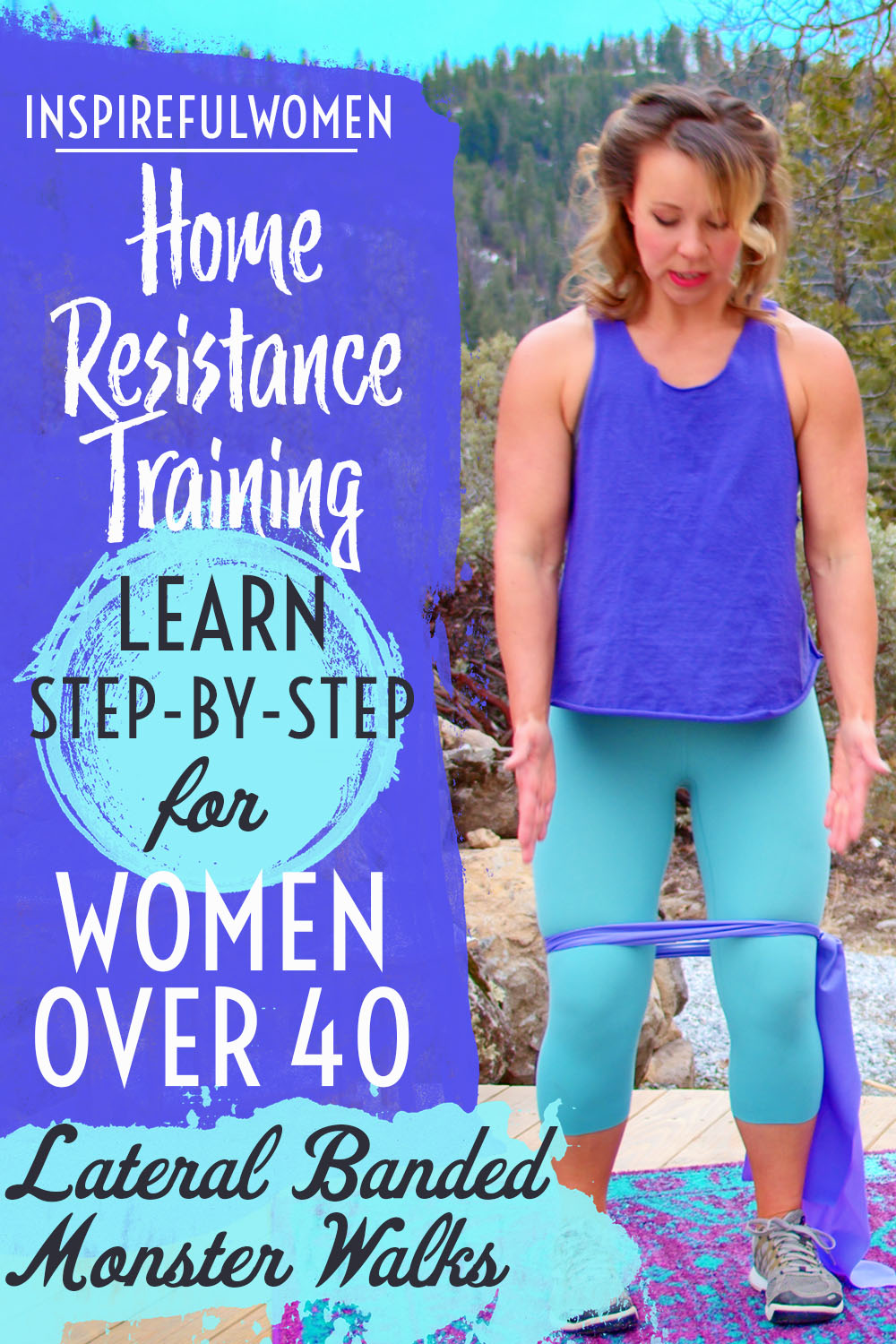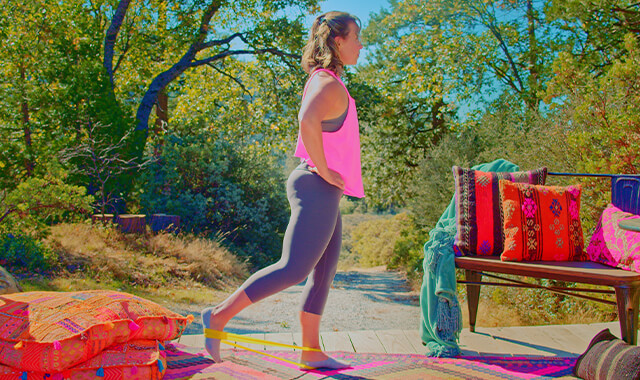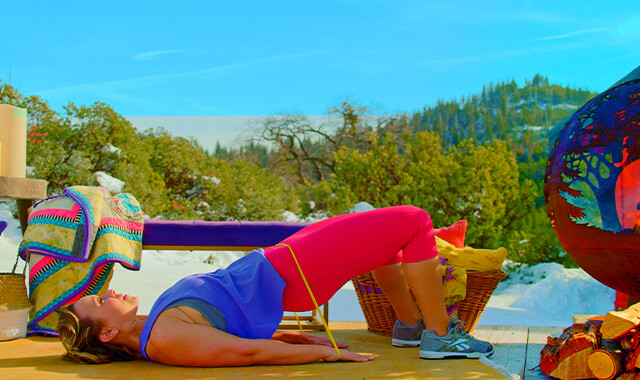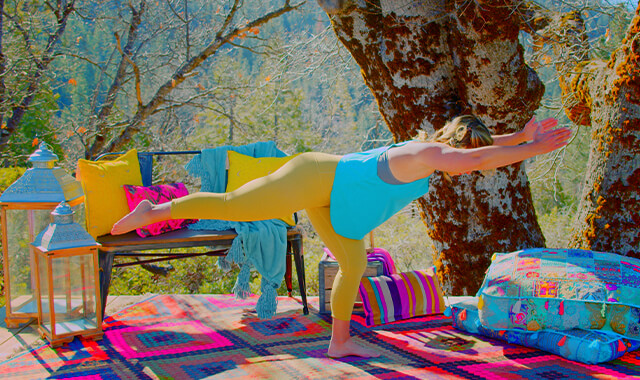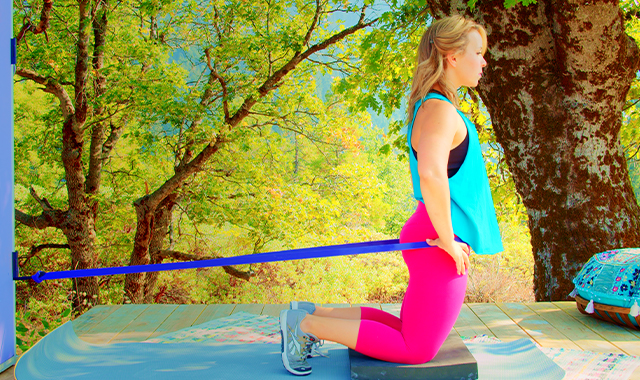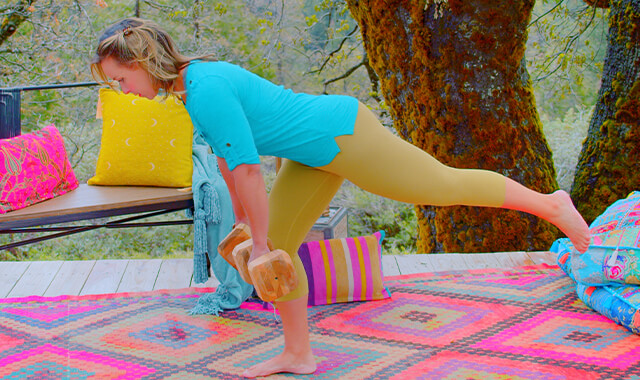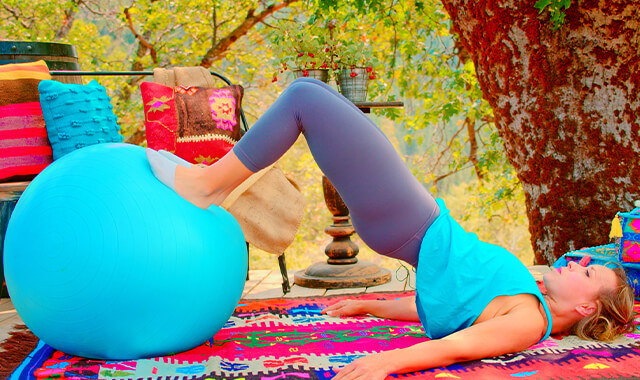Side Mini Band Monster Walks
How to Do the Standing Band Lateral Side Steps - Glute Medius Isolation Exercise | In-Depth Guide [VISUAL LEARNERS] Beginner
Proper Form, Common Mistakes, & Variations | Home Resistance Training
WHAT DO YOU WANT TO SEE?
QUICK DEMO
QUICK DEMO
MUSCLES THIS WORKS
MUSCLES
MAIN MUSCLES WORKED IN Lateral Band Walks
Gluteus Medius & Gluteus Minimus
OTHER MUSCLES WORKED:
- Internal and external obliques
- Quadratus lumborum
- Iliopsoas
- Rectus abdominis
- Erector spinae
- Multifidi
- Transverse abdominis
WHAT WE'RE DOING TODAY
WHAT & WHY
BENEFITS OF TRAINING THE glutes
WHAT
WHAT WE'RE DOING TODAY
Other names for this exercise: Side Stepping with Band
ALL WE'RE DOING:
Step sideways, with a mini-band around your ankles.
This simple yet effective exercise helps to activate and strengthen the muscles on the sides of your hips, promoting stability and improving overall lower body strength. Strap on that mini resistance band and walk like a monster to strengthen your hip abductors, engage your glutes, and experience the benefits of improved stability, strength, and overall lower body function.
This group of hip exercises is done standing up and moving the leg out to the side. These exercises will work both hips at the same time in different ways. The muscles of the standing leg will be working to hold the leg all lined up - foot, ankle, knee, hip and pelvis, and very still, and the moving leg will be pulling out against the resistance of the band. This works the hip abductor muscles (the muscles that move the leg out to the side and also hold the pelvis level) for both of their main functions.
When standing, the hip abductors of the weight-bearing leg (the one that is on the floor supporting the body) will work to hold the hip in neutral. When one leg is lifted up the pelvis of that side will drop down (relative hip adduction of the standing leg). The hip abductor muscles will contract to hold the pelvis level. Adding a band to the exercise will work the standing leg muscles even more. When the “working” leg moves out to the side, away from the body, the band will pull the standing leg into adduction. The hip abductors will work to hold the hip in neutral to keep the pelvis level.
WHY BOTHER DOING IT?
WHY
WHY DO WE EVEN CARE?
In most exercise programs we tend to focus on moving the legs forward and backwards. This can cause muscle imbalances by making the muscles of the front and back of the leg strong but not working the muscles on the outside and inside of the thigh. These muscles are equally important for keeping the knees, hips, pelvis, low back, and even ankles, feet, shoulders and neck properly aligned.
So much emphasis is put on working the large muscles - the gluteus maximus, quadriceps, hamstrings, while the smaller muscles are neglected. Over time, these muscles will not be able to keep up with the larger muscles that have been getting all of the attention. This can result in poor form with exercises, making the imbalance even greater. Learning to do the right exercises with correct form, and mindful movement, helps to wake the neglected muscles up, making them more involved (active) and stronger.
Our modern-day lifestyle has really reduced the variety of our movement. Even walking on fairly even sidewalks, running on treadmills, walking on paths, instead of walking on uneven terrain, has contributed to the inside and outside of our thighs being less active and weaker. When the hip muscles are not used in a lot of different ways, the joint can get tight and the muscles on the outside and inside of the hip can get weaker. When the hips are weak and stiff it changes the way the leg is used. The knee can begin to collapse inward, causing knee pain, pronation (ankle rolling in), bunions, and foot problems. Weak hip muscles have been associated with increased fall risk and poor balance.
EVERYDAY LIFE
EVERYDAY LIFE &
MUSCLE FUNCTION
HOW WE USE OUR glutes Muscles IN EVERYDAY LIFE
1. MOVES THE LEG OUT TO THE SIDE WHEN THE PELVIS IS HELD STILL
- Stepping sideways
- Lifting the leg to the side to get into a car
2. IN STANDING, THE MAIN FUNCTION OF THE HIP ABDUCTORS IS TO HOLD THE PELVIS HORIZONTAL (PREVENT IT FROM SAGGING) DURING GAIT/MOVEMENT
- Walking
- Running
- Balance and stability when walking or standing
- Weak hip muscles have been associated with increased risk for falls and poor balance
- Especially on uneven surfaces, or across a slope
- Climbing stairs
3. THE STANDING LEG LIFT EXERCISES FOCUS ON KEEPING THE PELVIS LEVEL, BUT IT IS IMPORTANT TO NOTE:
- The gluteus medius can contribute to flexion and internal rotation (anterior fibers) and extension and external rotation (posterior fibers) [this is similar to the actions of the different parts of the deltoid muscle]
- The gluteus minimus can help with flexion and internal rotation
HOW TO FEEL WHAT MUSCLE IS WORKING
How to Feel What Muscle is Working
This can be a tricky muscle group to feel because most of the gluteus medius is underneath the large gluteus maximus, and the gluteus minimus is underneath the gluteus medius. Lying on your side with the legs stacked and straight down in line with your torso. Feel the top of your pelvis with the palm of your hand on the side of the hip. Slide the hand back so the palm of the hand is about where it would be if you were putting your hand in your back pocket. Keep your pelvis still and lift your top leg up. You should feel the muscles deep, around the back side of the hip joint. Try to keep the gluteus maximus relaxed and soft.
STARTING POINTERS
Starting Pointers
This is a standing version of side leg lifts that adds a stepping motion. Adding a side step to each side will work both hips at the same time, in different ways. When one leg is lifted and steps out to the side, the resistance increases on both legs, the stepping leg is working harder to step out to the side, and the standing leg is working to keep the leg stable but also is pushing the weight of the body over to the stepping leg. Once all of the weight is transferred over to the stepping leg (which becomes the new standing leg), the other leg must work to control the movement as the band pulls the leg in.
This is a great exercise for training core stability as you are moving the body across the floor. It is good for strengthening, balance, coordination, stability and motor control.
HOW TO DO THE EXERCISE
LOOKS
HOW Lateral Band Walks SHAPE OUR BODY
Firm and toned outer hips (firm saddle bag region).
PROPER FORM
PROPER FORM: Lateral Band Walk
EQUIPMENT, SETS & REPS
EQUIPMENT
Mini Band
The standard mini-bands are about a 12" loop- which is actually too big for a lot of exercises to be effective (I mean, they'll do, but if you can....)
These are better & you'll be less annoyed:
10" loop mini-bands
9" loop mini-bands
9" loop mini-bands
If you buy 1 set, get the 9" size. I honestly recommend getting both. They're affordable & give you a lot of versatility to find the right stretch & resistance for a variety of exercises.
If these aren't currently for sale, you will need to search specifically for 9-inch or 10-inch mini bands. If you just search mini bands all you'll ever see are the 12" ones.
SUGGESTED STARTING WEIGHT FOR WOMEN:
Moderate to heavy resistance bands
SETS & REPS:
This will depend on how much space you have to side step. Ideally about 10-15 steps in each direction for 2-3 sets (out and back = one set).
PACE:
Slow Control
BODY POSITION
BODY POSITION FOR THE Lateral Band Walk
BAND: Around both ankles* or around both feet ** (with band going under the arch of both feet). When feet are about 4 inches apart the band should be taut.
* If you experience any discomfort or have any history of knee injury or pain - put the band just above the knees.
** Keep ankles in neutral at all times.
BODY STANCE: Stand with a neutral spine (includes neck). The pelvis and shoulders should be level and squared. Lift sternum.
FEET: Feet about 4-6 inches apart, toes pointed forward or slightly toed in.
LEGS: Knees bent - a slight mini squat position. Knee aligned over 2nd toe, not pronated or supinated (foot not rolling in or out).
ARM: Hands on hips to monitor for movement.
HOW TO DO
HOW TO DO Lateral Band Walks
CUE: Use a mirror or a window where you can see your reflection - the goal is to keep your upper body level and very still as you step - no leaning or rocking side to side.
Step out to the side staying in a slight squat position. Lift the trailing leg, moving it next to the stepping leg.
Repeat until you run out of space then return leading with the other leg.
Keep the torso upright during the movement.
HOW TO SAFELY GET OUT OF THE EXERCISE
Remove the band.


COMMON MISTAKES
COMMON MISTAKES
WHAT TO AVOID WITH THE Lateral Band Walk
KEY TIP:
Guess what? Good news! Many avoids are the same for most movements. Once you learn the basics, there's really only a few extra avoids for each individual movement.
1. Avoid toeing out
AVOID: Avoid toeing out. Keep the toes of both feet pointed forward.
WHY NOT?
- This is a common cheat that happens without you even realizing it - be mindful.
- The quadriceps are much stronger than the gluteus medius and minimis, rotating the thigh out is an attempt to use the stronger quads.
WHAT TO DO:
- Keep the toes of both feet facing forward or even toe in a bit to make sure you are using the gluteals.
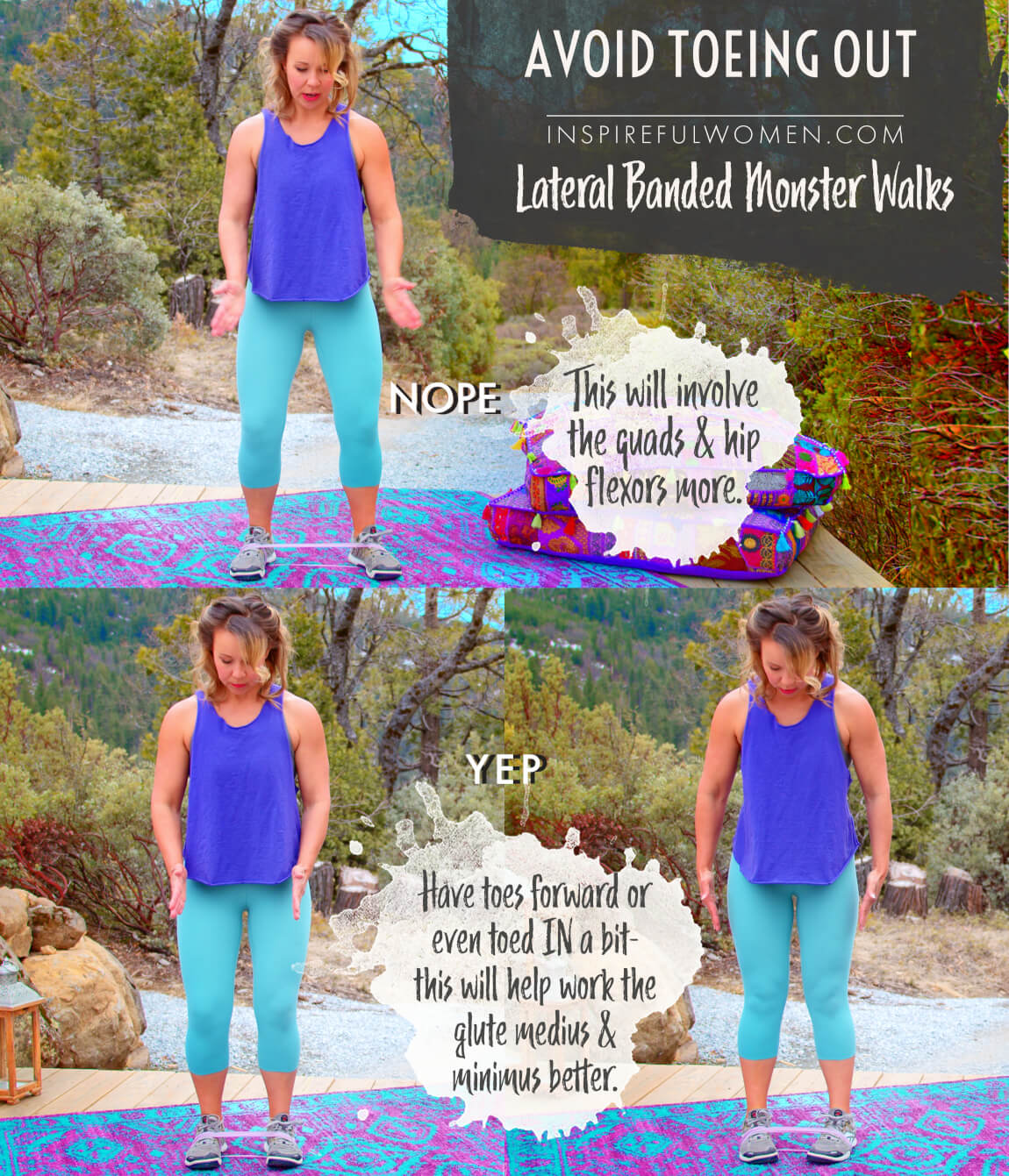
2. Avoid too wide step
AVOID: Avoid lifting/stepping leg too far.
WHY NOT?
- This is the most common error/cheat for this exercise.
- The goal of the exercise is to keep the pelvis still and isolate the movement to the hip joint while lifting the leg out into abduction.
- A wide step/high leg left can result in
-
- Leaning or rocking the body
- Turning the leg out because you will be able to flex the hip further than you are able to abduct the hip
- Turning the foot out and bending the hip forward like a forward stepping rather than moving the hip out to the side.
- Tilting the pelvis - and using the back to get the movement as opposed to the hip
- We only have about 30 -50 degrees of hip abduction (half way from straight down to straight out to the side) - so you will not be able to step out very far to the side.
- Using a band that is too loose may encourage you to step wide inorder to feel the resistance.
-
-
- Use a small band that is taut when your feet are about 4 inches apart.
- The muscles will start working sooner and work throughout the movement.
- When you use a looser band the muscles will not be challenged until the end of the movement.
-
- The most common error is moving the pelvis and low back to get the leg out further.
-
- Moving the leg out further is not the goal, the goal is to keep the pelvis and torso still as you move the leg.
- To use the correct muscles, the pelvis needs to stay level, otherwise, you are using your back muscles.
WHAT TO DO:
- Take smaller steps/lifts to the side.
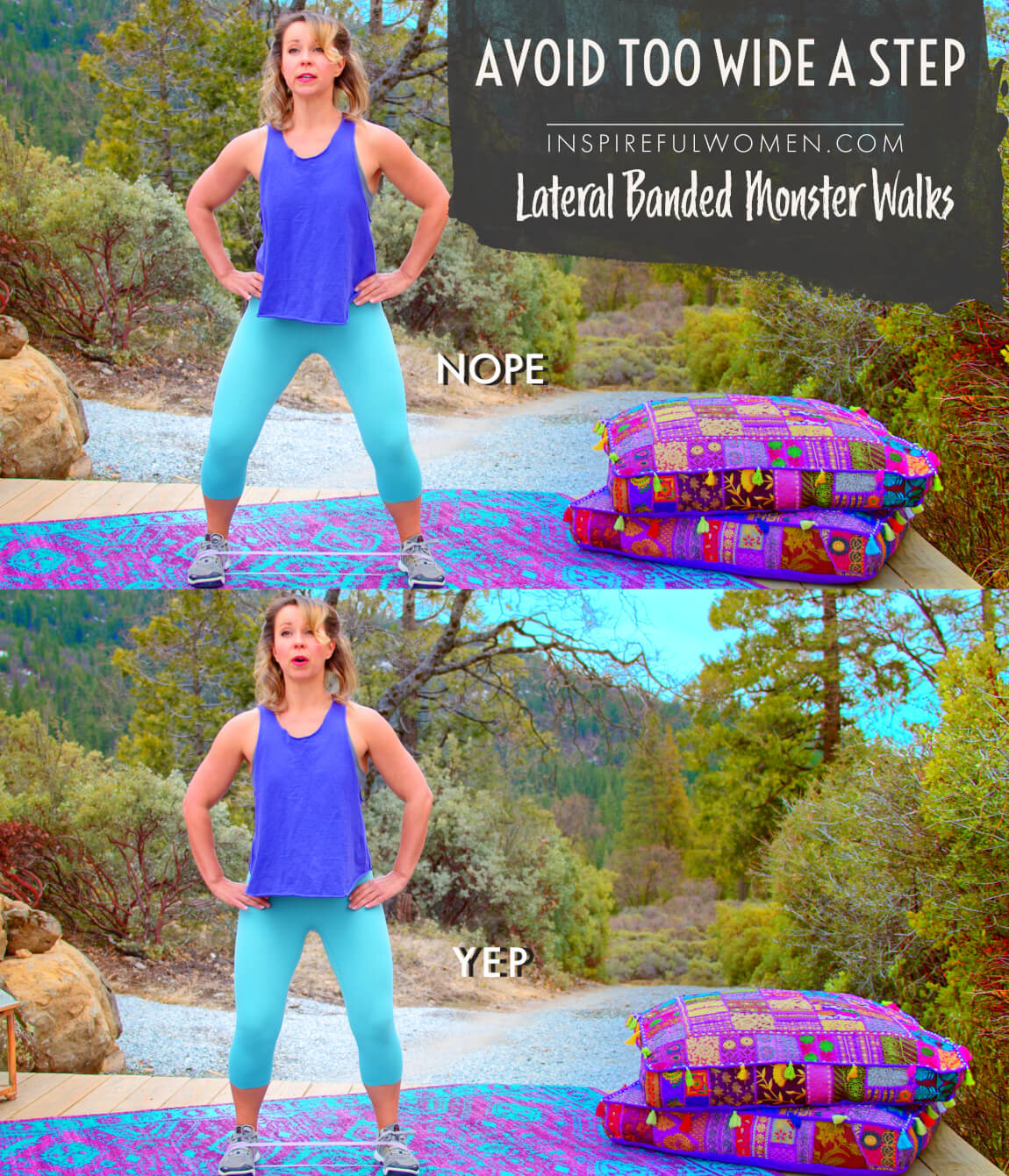
3. Avoid leg caving inward
AVOID: Avoid letting the knee of the standing leg cave inward.
WHY NOT?
- As you step out, the knee of the standing leg cave falls inward
- This puts uneven compression on the knee joint and can strain the ligaments on the side of the knee.
WHAT TO DO:
- Instead, think about keeping the knee of the following leg in alignment with the hip and toe at all times- the entire leg moves inward with the foot as you step back together.

4. Avoid torso leaning over
AVOID: Avoid leaning the body when you step/lift the leg.
WHY NOT:
- This is using gravity to help out - leaning over to one foot to take the weight off of the other foot as it moves.
- This will decrease the effectiveness of the exercise (less work by the hip abductors).
WHAT TO DO:
- Keep the knees slightly bent and move from the hips. The standing and stepping/lifting leg can be bent.
- Keep the torso upright - try doing this exercise with a book balanced on your head.

5. Avoid bobbing up and down
AVOID: Avoid bobbing the body up and down.
WHY NOT?
- That would mean that you are using your quads to bend and straighten your knees - lifting you up and then dropping back down. The goal is to just move sideways, using the hip abductors to push yourself across the floor.
WHAT TO DO:
- When you step/lift the leg to the side your body should not rise up, stay down in a bit of a squat position (but your torso up straight).
- You should feel as though you are gliding sideways without your body rising up or down.
- The less movement in your upper body - as if it were just gliding along smoothly across the floor, the more work the core and abductors will be doing.
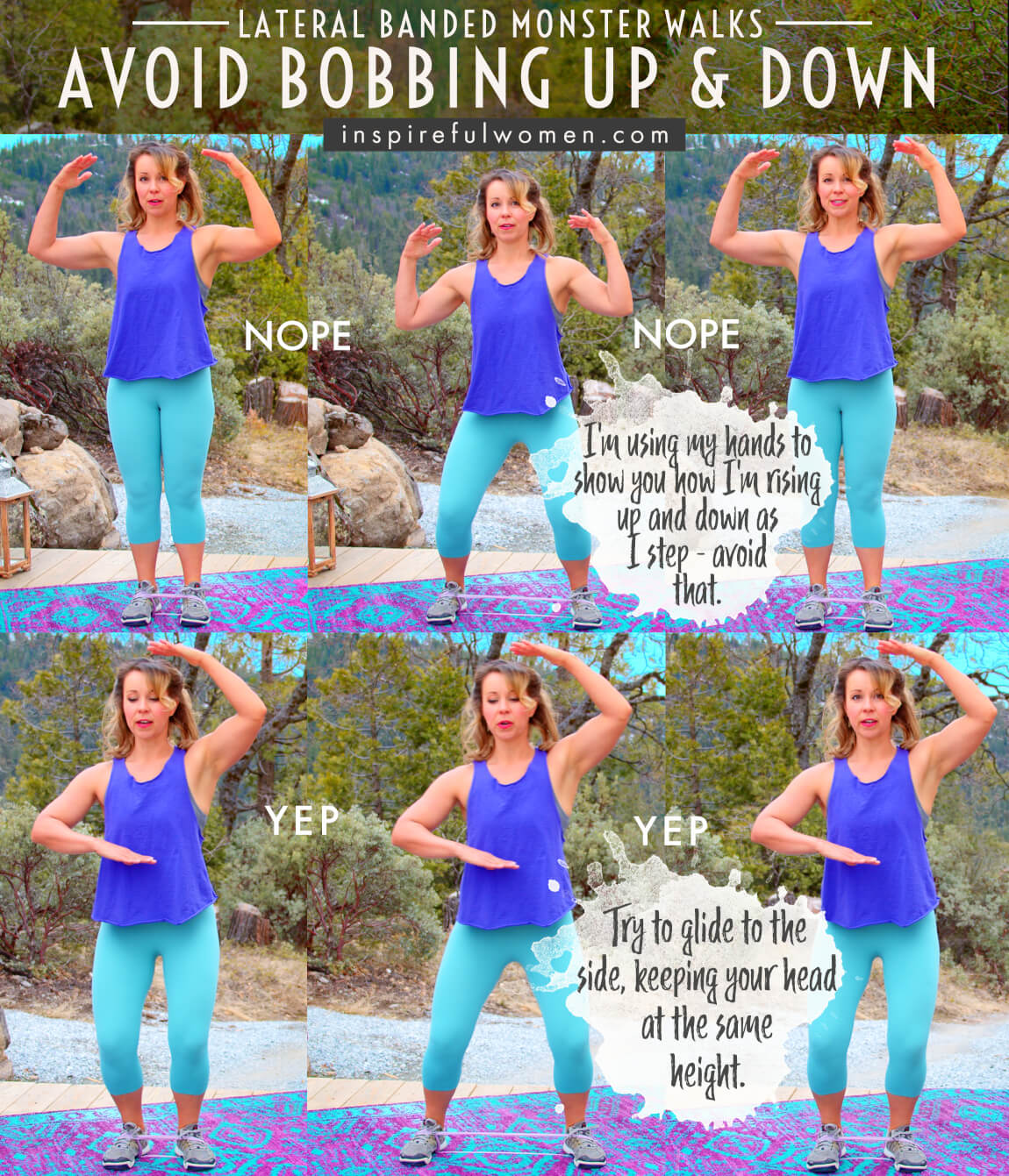
6. Avoid hips tilting
AVOID: Avoid letting one side of the pelvis drop or sag, or raising up the side of the hip of the working leg.
WHY NOT?
- Letting one side of the pelvis drop down lower than the other side means that you are not using the hip abductor on the other side of the pelvis.
- Raising the hip of the working leg will make it so that you are not working with a neutral spine.
WHAT TO DO:
- An important part of this exercise is keeping the pelvis level.
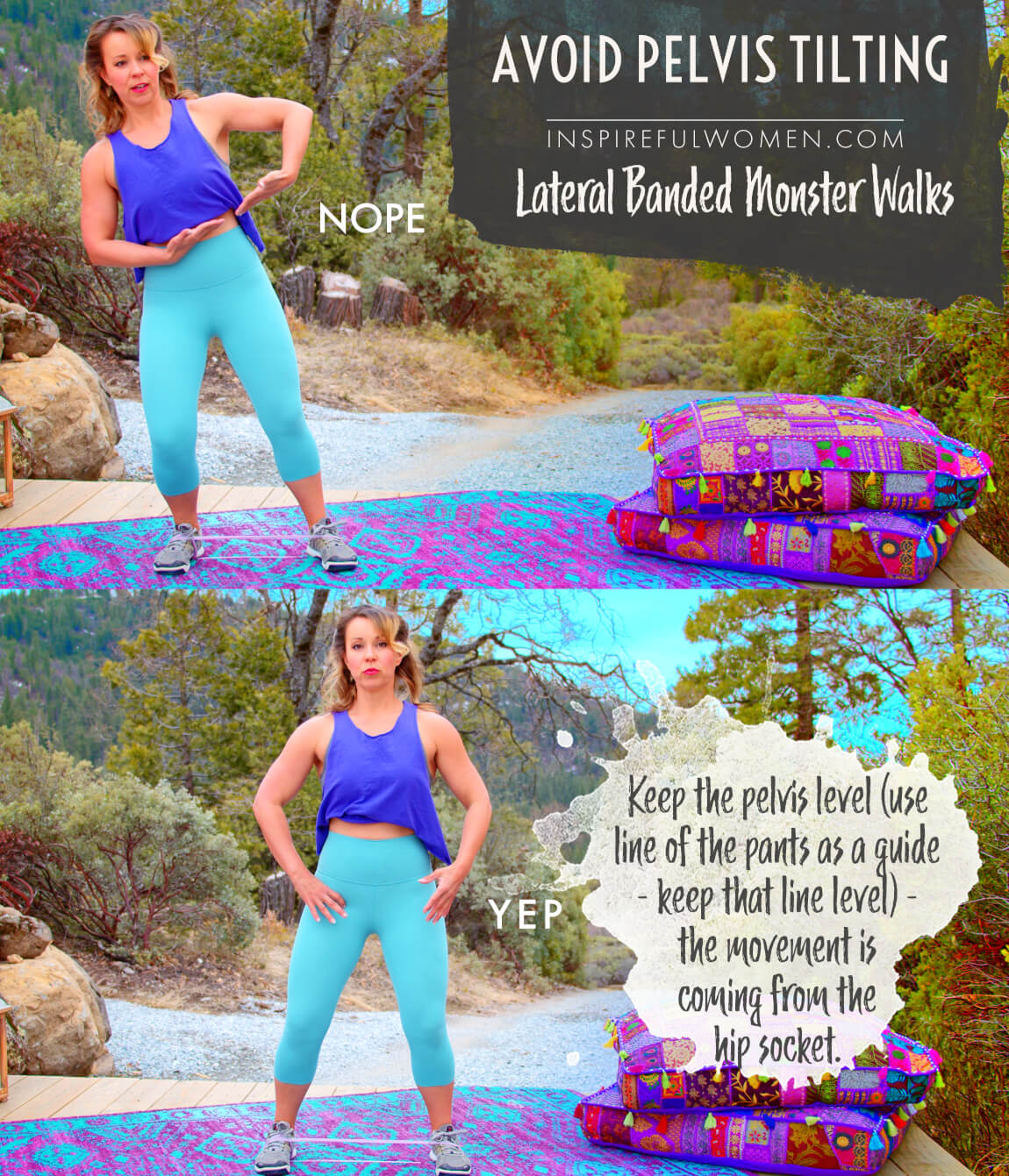
7. Avoid feet rolling in out
AVOID: Avoid stepping down with the toes or the side of the foot - side-stepping only.
WHY NOT?
- It is common to try to help the hip abductors out by working the foot more.
- This will make the hip abductors control the movement.
WHAT TO DO:
- When you step, land flat on the bottom of your foot.
- When you lift the foot up, lift it straight up, and avoid rolling up off of the toe or leaning the foot to the side.
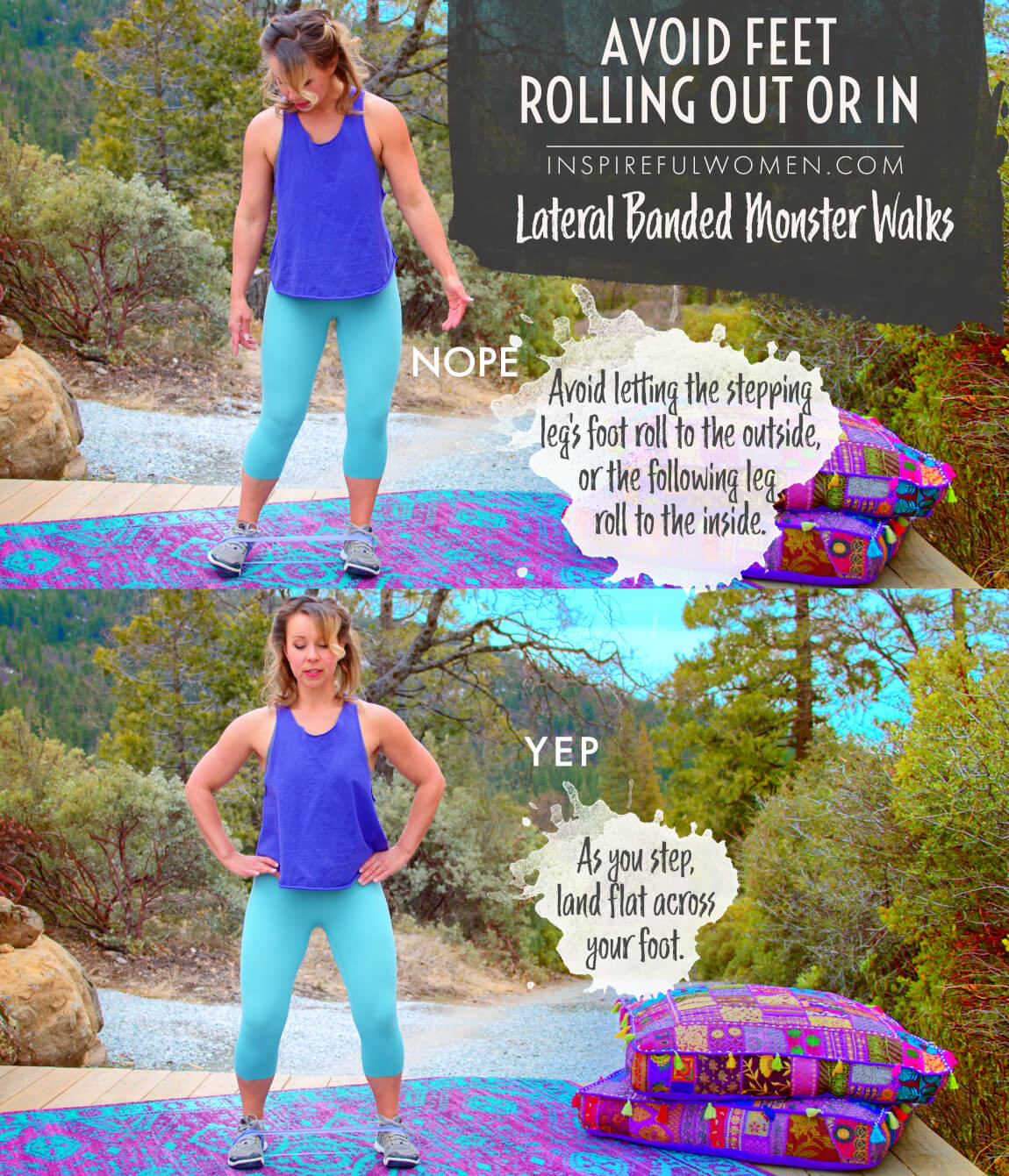
VARIATIONS
VARIATIONS
VARIATIONS OF Lateral Band Walks
band on ankles
band Around ankles Lateral walk
Around the ankles can make the movement either feel easier, or may be more comfortable if the band being under your feet causes you any pain (you might feel too much stress on your knees with it under your feet).

band above knees
Band Above knees lateral walk
Above the knees will be easier.
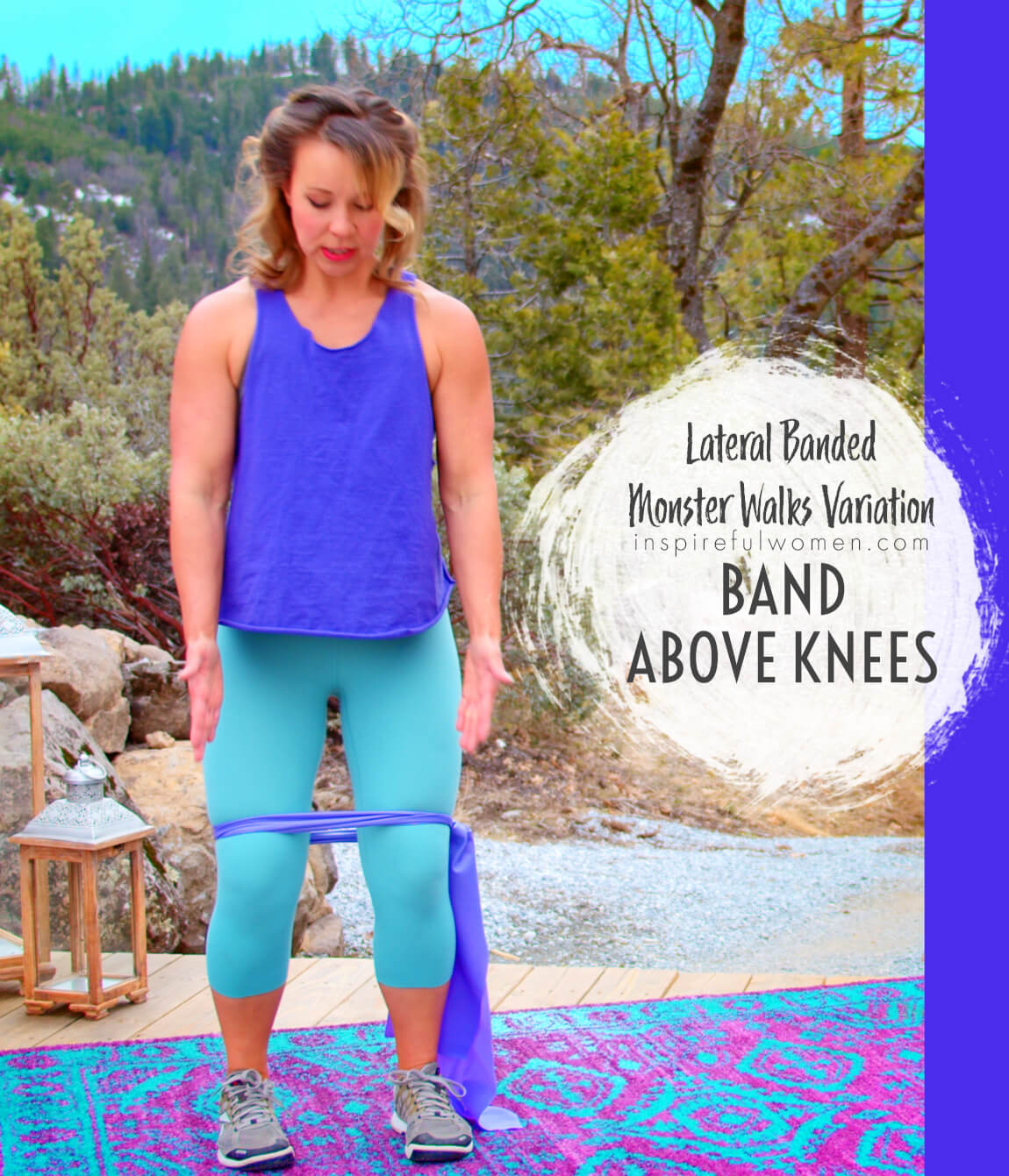
SCIENCY STUFF
ALL MUSCLES & WHEN
ALL MUSCLES WORKING & WHEN DURING THE Lateral Band Walk
The core muscles are working to stabilize the spine in neutral alignment. The standing leg: the gluteus medius and minimis work to hold the pelvis level; the leg muscles work to keep the hip/knee/lower leg/ankle and foot aligned and stable.
For this example - stepping to the right, leading with the right leg. The right gluteus medius and minimis work concentrically to step out sideways to the right. The left gluteus medius and minimis contract (isometrically and concentric) to control the movement at the hip being pulled into adduction and to push the body to the right, as the weight is transferred over to the right leg.
When both feet are planted on the floor, both hips are stabilizing isometrically.
The left leg is lifted from the floor, and the band will pull the leg into adduction. The hip abductors will contract eccentrically to control the pull of the band as the leg moves in next to the right leg.
PIN IT FOR LATER!
